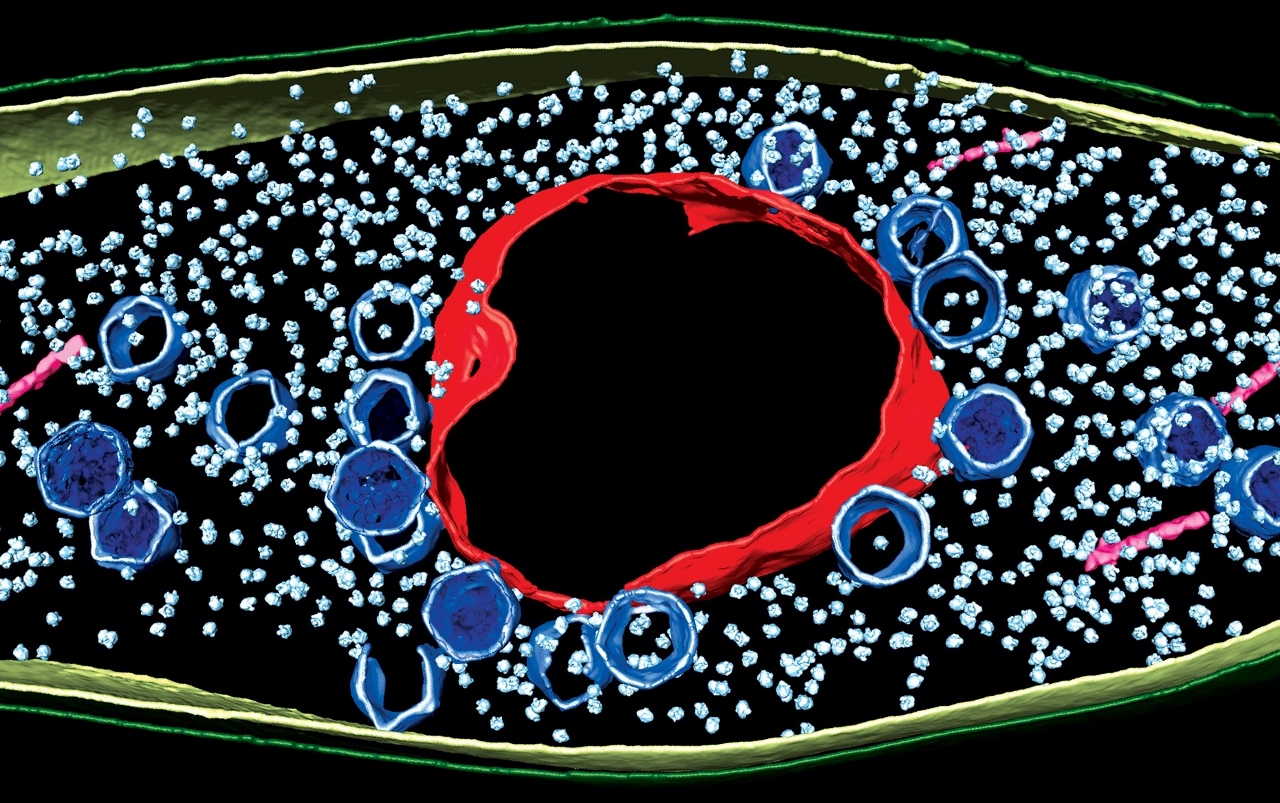
Biologists Discover How Viruses Hijack Cell’s Machinery
Published Date
By:
- Kim McDonald
Share This:
Article Content
Biologists at UC San Diego have documented for the first time how very large viruses reprogram the cellular machinery of bacteria during infection to more closely resemble an animal or human cell—a process that allows these alien invaders to trick cells into producing hundreds of new viruses, which eventually explode from and kill the cells they infect.
In a paper published in the January 13 issue of Science, the researchers conducted a series of experiments that allowed them to view in detail what happens inside bacterial cells as the invading viruses replicate.
“Scientists have been studying viruses for a hundred years, but we’ve never seen anything like this before,” said Joe Pogliano, a professor of molecular biology who headed the research team. “Every experiment produced something new and exciting about this system.”
Viruses that infect bacteria, also known as bacteriophages, are some of the most numerous entities on earth.
“We chose to study a family of unusually large bacteriophage and to apply cutting edge methods to watch their replication in unprecedented detail,” said Kit Pogliano, a professor of molecular biology who participated in the study.
Joe Pogliano and his colleagues found that shortly after bacteriophages infect bacteria, they destroy much of the existing architecture of the bacterial cells, including bacterial DNA, then hijack the remaining cellular machinery. The viruses then reorganize the entire cell into an efficient, centralized factory to produce the next generation of viruses.
“This factory and the surrounding arrangement of the infected cell are remarkably similar to the organization seen in plant and animal cells,” said Pogliano.
Bacteria lack many of the specialized structures that compartmentalize cellular processes in plant or animal cells, which biologists call “eukaryotic” cells. Bacteria, for example, lack an enclosed nucleus, which contains genetic information and acts as the control center of the cell.
But Vorrapon Chaikeeratisak, a postdoctoral fellow, and Katrina Nguyen, a graduate student in Pogliano’s laboratory, found that invading viruses organize the structures within bacteria to mimic those found in eukaryotic cells.
Using fluorescent microscopy, the two biologists discovered that as viruses replicate within bacterial cells, they build compartments to separate the different processes going on during infection.
“These compartments enclose all the viral DNA, just as a nucleus does in a plant or mammalian cell,” said Chaikeeratisak, the first author of the paper. “DNA processes, like replication or transcription, occur inside the compartment while proteins are produced outside the compartment.”
Elizabeth Villa, a professor of chemistry and biochemistry at UC San Diego, and David Agard, a professor of biochemistry and biophysics at UC San Francisco, used a specialized technique, called “cryo-electron tomography,” to produce images of the processes that Chaikeeratisak and Nguyen initially discovered at extremely high magnification.
Those pictures showed viral offspring being assembled around the nucleus-like compartment in the bacterium. Eventually, these new viruses burst the cell open and spread out to infect neighboring cells.
“These observations of viral manipulation of a cell are completely unexpected, as no bacterial virus has been seen to reorganize a cell in so drastic a manner,” said Pogliano. “The restructuring of a simple cell to resemble an existing, more complicated system blurs the line between simple bacterial cells and those of ‘higher’ organisms, such as plants and animals.”
Could this be how multicellular organisms evolved? One existing theory, called “viral eukaryogenesis,” suggests that the first eukaryotic cell was created when a large virus took over a bacterium. Eventually, the bacterium and virus formed a compound cell, in which the virus evolved into the nucleus.
“It may be too early to know if this particular virus is an intermediate step in the transition from bacteria and viruses to multicellular eukaryotes, but this discovery could broaden knowledge about the origins of life as we know it,” said Pogliano.
The study was supported by grants from the National Institutes of Health (GM031627, GM104556, GM57045, 1DP2GM123494-01) and the Howard Hughes Medical Institute.
Share This:
You May Also Like
Stay in the Know
Keep up with all the latest from UC San Diego. Subscribe to the newsletter today.



